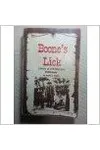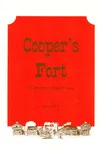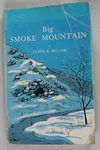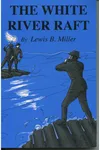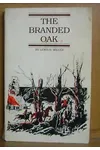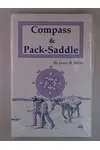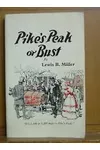Picture a Texan storyteller who spun tales of rugged pioneers and untamed frontiers—meet Lewis B. Miller! Born in 1861, this prolific author brought the American Southwest to life with over twenty Western adventure novels. His vivid storytelling, rooted in his own frontier childhood, continues to captivate readers with its blend of grit, heart, and historical charm.
From the dusty trails of Texas to the wild rivers of Arkansas, Miller’s works like The White River Raft and Big Smoke Mountain transport you to a time when survival demanded courage and camaraderie. Let’s saddle up and explore the life and legacy of this unsung hero of Western literature!
The Making of Lewis B. Miller
Lewis Bennett Miller was born on May 27, 1861, on Blocker Creek in Cooke County, Texas, to Henry and Lurilla Miller. Growing up on the Texas frontier, young Lewis soaked in the raw beauty and challenges of pioneer life, which later fueled his stories. His family’s brief stint in Missouri and return to a farm in Erath County shaped his deep connection to the Southwest. A bright scholar, Miller graduated from Add-Ran College (now Texas Christian University) in 1881, where he taught Latin and Greek until 1884. His early career took him from Texas schoolrooms to editorial desks in Iowa and Ohio, but it was his knack for storytelling that defined his path.
In 1892, Miller joined the Crowell Publishing Company in Springfield, Ohio, and by 1894, he was penning adventure stories for magazines like The National Stockman and Farmer. These serialized tales, often drawn from his childhood at Fort Blocker, Texas, laid the groundwork for his novels. His experiences homesteading in Oklahoma in 1904 added authenticity to his vivid depictions of frontier life.
Lewis B. Miller’s Unforgettable Stories
Miller’s novels are a love letter to the American Southwest, blending historical accuracy with thrilling narratives. His 1910 novel, The White River Raft, follows a logging crew’s perilous journey through Arkansas’s flooded forests and down the Mississippi, capturing the raw adventure of rafting life. Saddles and Lariats (1912) chronicles a daring cattle drive from Texas to California during the Gold Rush, brimming with danger and camaraderie.
Big Smoke Mountain (ca. 1929) showcases Miller’s knack for weaving autobiographical elements into fiction, drawing on his Fort Blocker days to depict pioneer struggles and triumphs. Fort Blocker Boys (1917) celebrates the friendships and adventures of his youth, with characters facing frontier challenges with grit and humor. Miller’s style is direct yet evocative, painting vivid landscapes and complex characters—scouts, settlers, and dreamers—who embody the spirit of the West.
His stories often explore themes of resilience, community, and the clash between civilization and the wild. While serialized in farm weeklies, they reached a niche but devoted audience, and recent reprints by small presses have revived interest in his work.
Why Lewis B. Miller Matters
Lewis B. Miller’s legacy lies in his ability to preserve the Southwest’s pioneer spirit through authentic, heartfelt storytelling. His novels offer a window into a transformative era, celebrating the courage and camaraderie of those who shaped the West. Though less known than contemporaries, his focus on historical and geographical accuracy sets him apart, making his works valuable for readers and historians alike.
Miller’s influence endures in the Western genre, inspiring authors who value character-driven tales grounded in real-world struggles. His obscurity only adds intrigue—rediscovering his stories feels like unearthing a hidden treasure of American literature.
- Born: May 27, 1861, Cooke County, Texas
- Key Works: The White River Raft, Saddles and Lariats, Big Smoke Mountain, Fort Blocker Boys
- Died: July 26, 1933, Marlin, Texas
Snag The White River Raft or Big Smoke Mountain and dive into Lewis B. Miller’s thrilling Western world! His tales of adventure and heart will leave you longing for the open trail.
